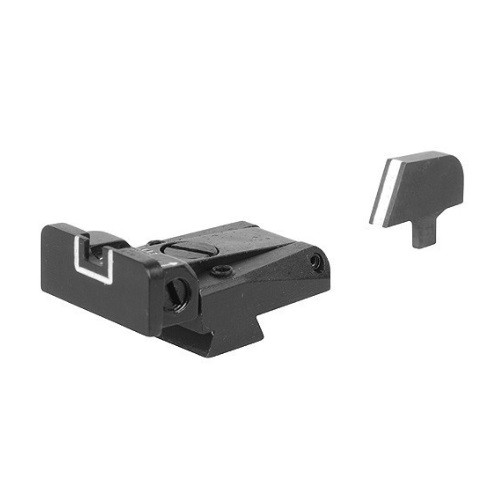

You won't be able to get a straight shot at it, so you'll need a bent punch or piece of stock, preferably aluminum or brass, to tap it out. You now have the punch firmly wedged into place between the tool and the slide, and it must be driven back out from inside the slide. The next step, according to Trijicon's printed instructions is to remove the punch. Lubricate the appropriate slotted shear punch with grease and drive it into the fixture until flush. The fixture clamps down on this skirt so pressure isn't applied directly over the tritium capsule. You'll note that Trijicon sights have a skirt around the bottom edge next to the slide. I suggested Trijicons due to the excellent sight picture they provide, the lower cost of staking the front sight as opposed to machining a dovetail and the desire to avoid rebluing the slide. The Colt we have on the bench is a current production Commander model with basic fixed sights. Follow along as we replace the sights on a Colt Commander. Using this tool allows an armorer to replace a staked 1911 front sight with a tritium night sight quickly and efficiently. A look through the current Brownell's catalog reveals the only stake-on front sights they offer are Trijicons, and Trijicon offers a copy of the original MMC sight tool for armorers. Dovetailing has become the de facto sight attachment method for most manufacturers. Staked front sights have pretty much disappeared from the catalogs of aftermarket suppliers. This system was easy to use and produced excellent results.įast forward to 2014. The MMC tool consisted of a block of steel that fitted on to the muzzle end of a 1911 slide with a set screw that applied pressure to the top of the sight while a swaging bar was driven through a slot to force the metal of the sight tenon up into the slide recess. The downside to dovetailing front sights on older factory pistols is the need for a milling machine, a carbide dovetail cutter and a skilled individual to run it. Most aftermarket 1911 front sights offered today are of the dovetail type. Dovetailing allows front sights to be swapped out with a minimum of fuss and is a very secure attachment method. In the 1990s, custom smiths like Wayne Novak began offering dovetailed front sights, and I think they are the best way to go. If the solder isn't applied perfectly, the front sight may fly off. The problem with soldering is the finish of the slide will be damaged, and it's a technique not everyone has mastered. This method worked pretty well with the tiny GI half-moon combat sights, but as front sight blades became wider and taller in the '60s and '70s, soldering them in place became common. The factory cut a slot in the slide through which the tenon of the front sight was inserted and the extra metal of this tenon was swaged upwards from inside the slide fixing the sight in place. There was a time (a couple decades ago) when most 1911 front sights were staked in place as John Browning originally intended.


 0 kommentar(er)
0 kommentar(er)
